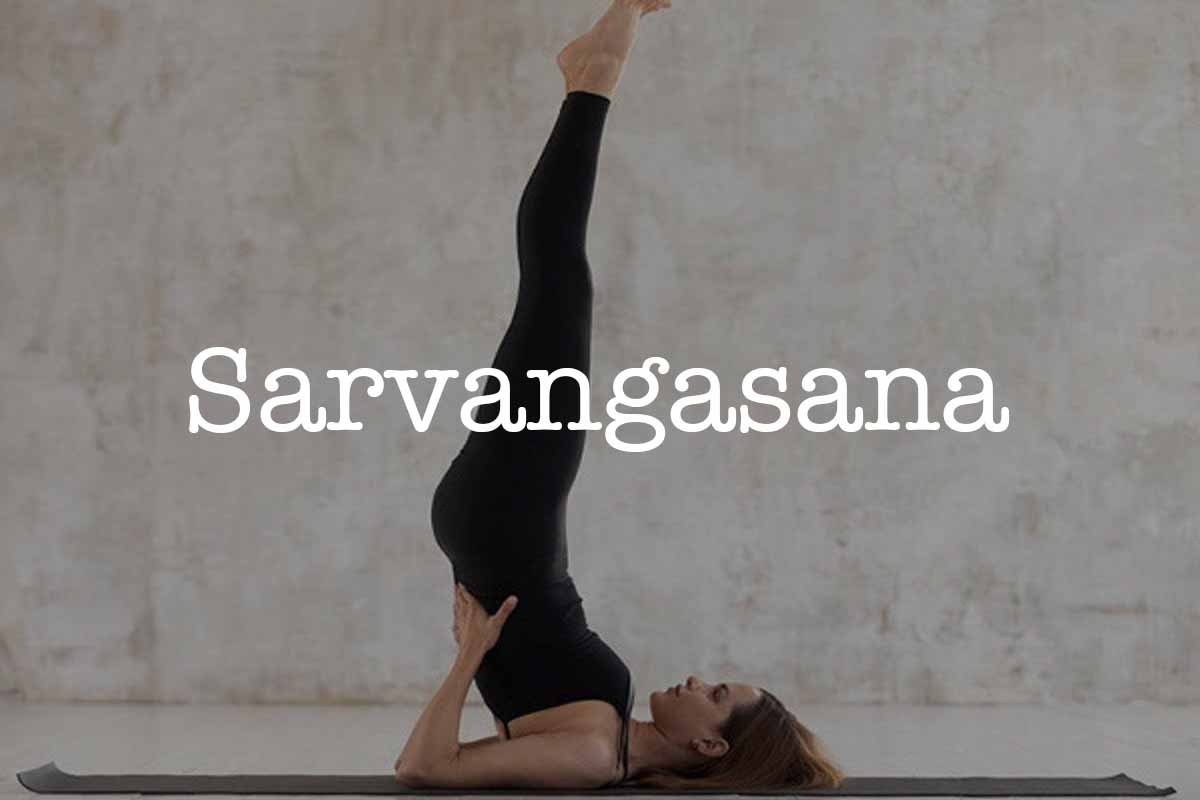In Sarvangasana, practitioners need to balance their whole-body weight on their shoulders. There are two variations of this posture, known by the name of Salamba Sarvangasana (in this, the practitioners keep a folded blanket for supporting shoulders) and Niralamba Sarvangasana (in this, the practitioner performs Sarvangasana without any support).
Etymology of Sarvangasana
The term Sarvangasana comprises three Sanskrit words: ‘Sarva’ meaning whole of all, ‘Anga’ Meaning body parts and ‘Asana’ meaning posture. The asana is known by this name as every single body part is moved in one way or another while performing this asana.
Steps for performing Sarvangasana
1. Start by lying down on the floor with your face towards the sky. The legs must remain joined and both palms placed on the floor beside the waist.
2. Exhale and while inhaling, slowly lift both legs upwards so that your legs become perpendicular to your upper body. in other words, your body posture must resemble a right (90 Degrees) angle.
3. While maintaining the above-mentioned position, exhale and raise your upper body upwards while keeping your shoulder and your palms on the ground, in the previously mentioned position.
4. Raise your palms from and while keeping your elbows touched to the ground, provide support to the waist.
5. Raise your body further to position the back, waist and legs in a vertically straight line. Point the toes and point them towards the roof. Look at the toes. Breathe normally.
6. Maintain this posture for a few moments.
7. in order to return to the previous position, gently bring down the upper body and relax for some moments by simply lying on the floor. Repeat this to a maximum of 3-4 times or as per your capacity
Precaution for Beginners/ Practitioners
1. Practitioners who are unable to raise their upper body on their own, can use pillows for the support.
2. Do not try to overstretch your body while performing it for the first time. With regular practice, you would be able to raise your body properly.
3. Practitioners who are weak or old and might find this asana difficult to practice, are advised to consult some yoga practitioner to suggest some alternative yoga posture providing benefits of Sarvanana.
4. People who are suffering from middle ear disorders, increased blood pressure, slip disc or spondylitis are advised to avoid this asana.
Benefits of performing Sarvangasana
1. Helps in curing disorders related to urinary organs, sexual disorders and ENT (Ear, Nose, Throat).
2. Helps in reducing health complications caused due to diseases such as diabetes and asthma.
3. Controls wrinkling and aging of skin.
4. Helps in curing hemorrhoids, varicose veins liver and intestine related disease.
5. Helps in controlling unintended loss of semen due to Reproductive system disorders.
6. Improves functioning of digestive and respiratory system.
7. Regulates and improves blood circulation in the body.8. Refreshes thyroid gland by channeling the blood flow towards the thyroid gland.
